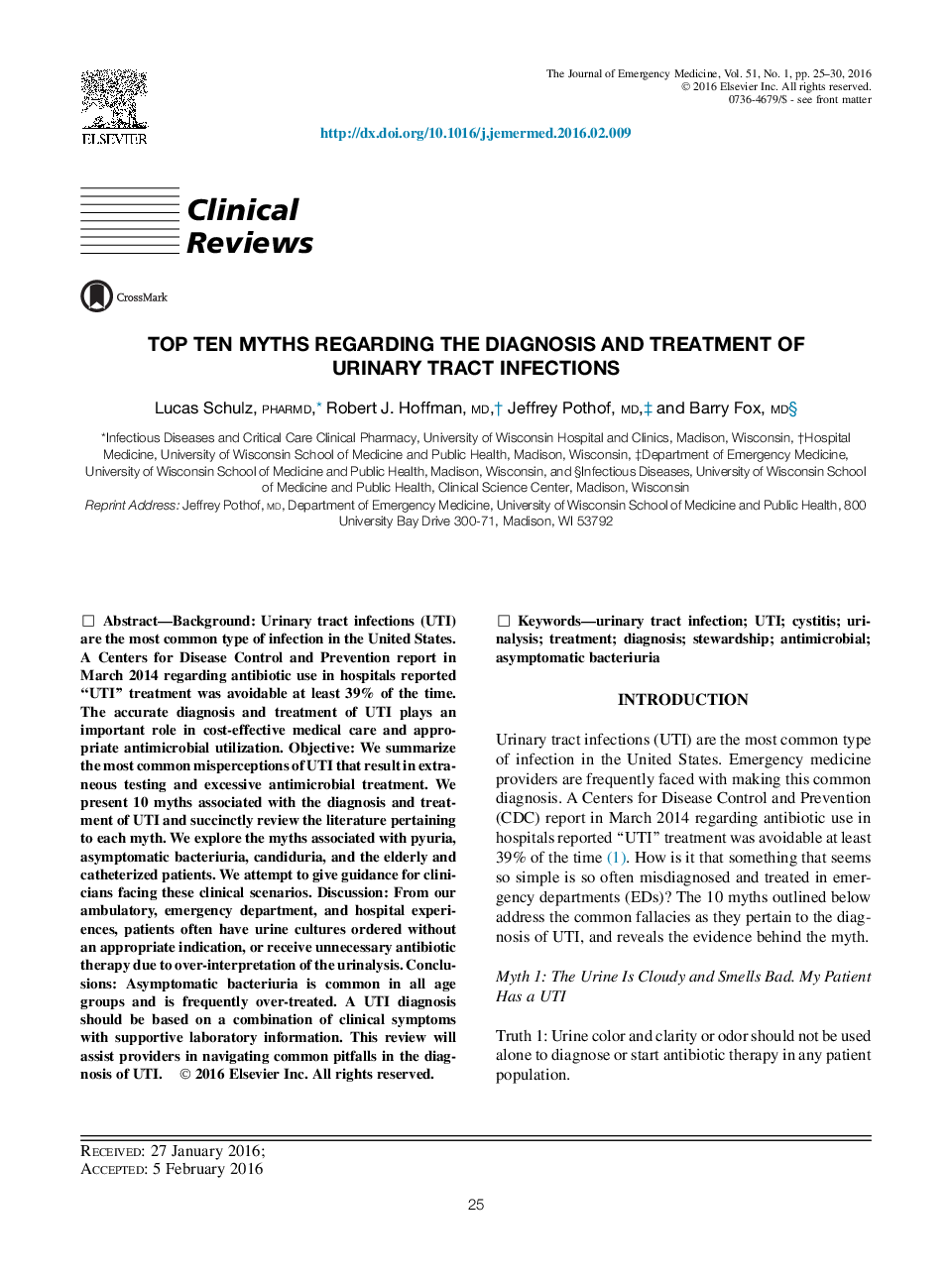| Article ID | Journal | Published Year | Pages | File Type |
|---|---|---|---|---|
| 3245769 | The Journal of Emergency Medicine | 2016 | 6 Pages |
BackgroundUrinary tract infections (UTI) are the most common type of infection in the United States. A Centers for Disease Control and Prevention report in March 2014 regarding antibiotic use in hospitals reported “UTI” treatment was avoidable at least 39% of the time. The accurate diagnosis and treatment of UTI plays an important role in cost-effective medical care and appropriate antimicrobial utilization.ObjectiveWe summarize the most common misperceptions of UTI that result in extraneous testing and excessive antimicrobial treatment. We present 10 myths associated with the diagnosis and treatment of UTI and succinctly review the literature pertaining to each myth. We explore the myths associated with pyuria, asymptomatic bacteriuria, candiduria, and the elderly and catheterized patients. We attempt to give guidance for clinicians facing these clinical scenarios.DiscussionFrom our ambulatory, emergency department, and hospital experiences, patients often have urine cultures ordered without an appropriate indication, or receive unnecessary antibiotic therapy due to over-interpretation of the urinalysis.ConclusionsAsymptomatic bacteriuria is common in all age groups and is frequently over-treated. A UTI diagnosis should be based on a combination of clinical symptoms with supportive laboratory information. This review will assist providers in navigating common pitfalls in the diagnosis of UTI.
